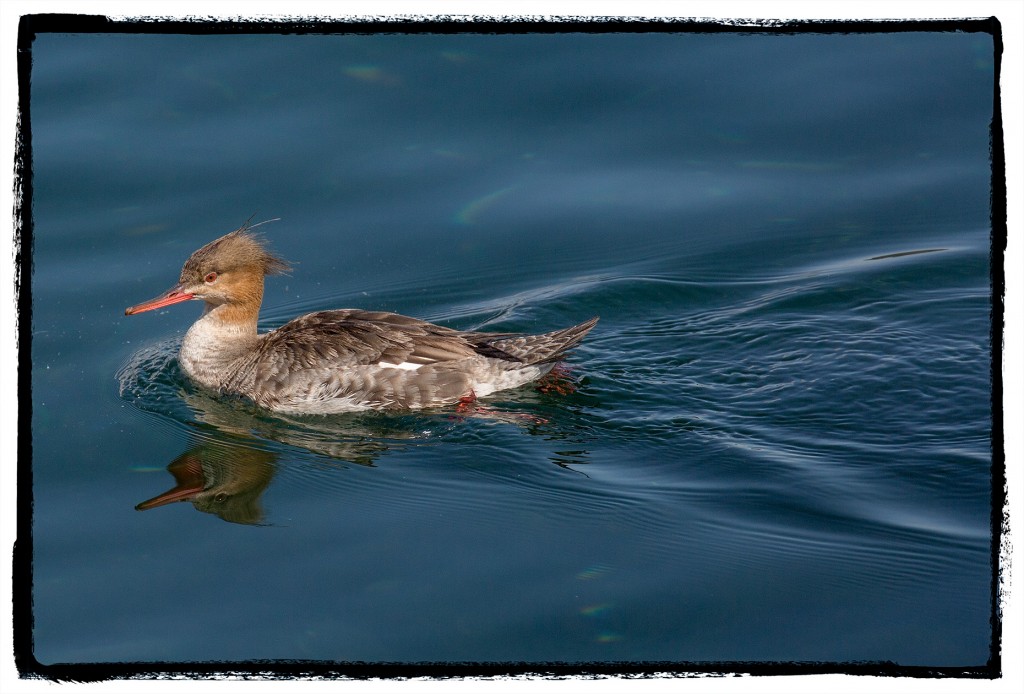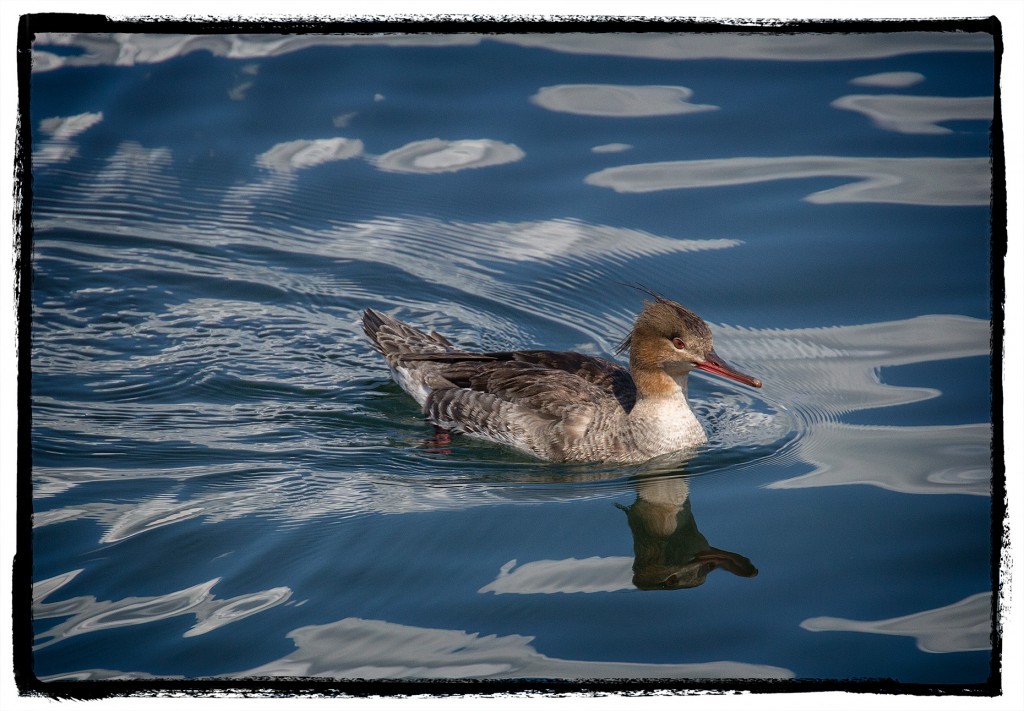Although I wouldn’t exactly call it “birding,” I did get a chance to get down to Ruston Way where I found three female Red-Breasted Mergansers to focus on to see how well my new 100-400 mm lens would work as a birding lens.
One of my favorite shots was this one where I captured the three in various stages of diving, something I could never have captured with my 400mm fixed lens.
To be more exact, I would have had to take a very quick three shots and hope that they were similar enough together that Photoshop’s “Photomerge” could stitch them together (an altogether hit-and-miss affair). At 280mm all three subjects are relatively sharp, something that was a problem shooting at 400mm.
When I zoomed in on one of the ducks at 560mm (I was using a 1.4 converter) the results seemed equally crisp.
Most of the time I prefer not to have to crop the picture very much, though I almost invariably adjust the frame a little because with a 1.5 converter on I only get auto-focus dead center on the lens, which isn’t a problem for me because when I’m shooting birds I always center the lens on the bird, especially in flight.
Although this lens might not be as sharp as my 400mm prime lens, it’s certainly hard to tell the difference. This picture was cropped considerably and, except for the slightly blurred wings, it still seems quite sharp to me.
I haven’t had nearly enough time to evaluate the lens, but it does seem to fulfill my needs better than any other lens I have at the moment. I’m not thrilled that its heavier than my old 400mm lens and the circumference makes it more challenging to hold, but hopefully I’ll soon become accustomed to those differences and they will be more than offset by its advantages.




